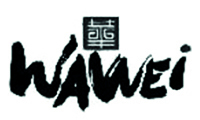Likelihood of confusion comparison in EU languages
In a recent decision of the EUIPO, the opposition division found that the trade mark HUAWEI was confusingly similar to WAWEI (device). The comparison of trade marks included an analysis in a number of European Union languages.
Background
On 03 November 2015, Taiwan Wachine Co Ltd (Taiwan Wachine) applied to register the trade mark WAWEI (device) for food and drink in classes 29, 30 and 32 under EUTM application no. 14759096.

The trade mark was opposed by Huawei Technologies Co Ltd (Huawei) who own EUTM registration no. 996729 HUAWEI covering all 45 classes which was registered on 17 February 2012.
The opposition was based (amongst other grounds) on a claim of likelihood of confusion and association between the trade marks.
The average consumer
The opposition division stated that the goods contained in the application are every day food and drink items and concluded that the relevant public would be the average consumer who is deemed to be reasonably well-informed and reasonably observant and circumspect.
Comparison of goods
Huawei’s earlier trade mark registration covered a broad range of goods in classes 29, 30 and 32. The office found that the majority of these goods were identical, with the remaining goods being regarded as similar.
Comparison of marks
Visual comparison
The trade marks were found similar as they share the letters “AWEI”. The opposition division noted that the trade marks have different beginnings, but commented that “while it is true that the beginning of the marks is the part that first captures the consumer’s attention, it must be recalled that the argument cannot hold in all cases and does not, in any event, cast out on the principle that the assessment of the similarity of marks must take account of the overall impression created by those marks”.
Huawei claimed that the figurative element in the application would be seen as decorative and would have limited effect on the comparison of the signs. They also reiterated the principle that the verbal element of the sign usually has stronger impact than a figurative component.
Aural comparison
The signs are similar insofar as the pronunciation of “AWEI”.
Interestingly, the opposition division went on to analyse the trade marks in different languages of the European Union.
Firstly, in Polish, the opposition division observed that the letter “H” at the beginning of a word is always pronounced. In Polish, the differences between HUAWEI and WAWEI would lie in the elements “HU” and “W”. In contrast, Spanish and French speakers do not pronounce the “H” at the beginning of the word and the letters “U” and “W” would be similar.
The opposition division concluded that the trade marks would be similar to an average degree to Polish-speaking consumers and similar to a high degree for French and Spanish speakers.
Conceptual comparison
As neither word has any meaning, a conceptual comparison is not possible.
Global assessment
Overall the opposition division found that the differences between the signs were confined to the first letters and sounds in the elements ‘HU’ versus ‘W’.
The figurative element of the trade mark application which is a Chinese character together with the stylisation of the word element has limited effect on the overall comparison.
Although there is a risk of relying too much on ‘mechanical quantitative evaluation’ it is a fact that counting the number of letters, identifying the identical letters and comparing their order in the trade marks can provide certain guidance on similarity.
For this case, the verbal elements share four letters while in total they consist of six/five letters. The overall impression of the trade marks is clearly similar.
Coexistence
The applicant argued that the trade mark co-existed in Taiwan, but because co-existence was not in the relevant territory (the EU); it was not considered by the office.
Decision
Overall, the EUIPO found that the opposition was well-founded and refused the trade mark application in its entirety.
In short
This decision highlights the importance placed by the EUIPO of comparing trade marks in the different languages of the European Union. If trade marks are pronounced differently in different member states or vice versa, evidence of such might be helpful to support arguments for comparing trade marks.
Case details at a glance
Jurisdiction: European Union
Decision level: Opposition Division
Parties: Huawei Technologies Co Ltd v Tawian Wachine Co Ltd
Opposition: B 2 683 319
Date: 18 July 2017